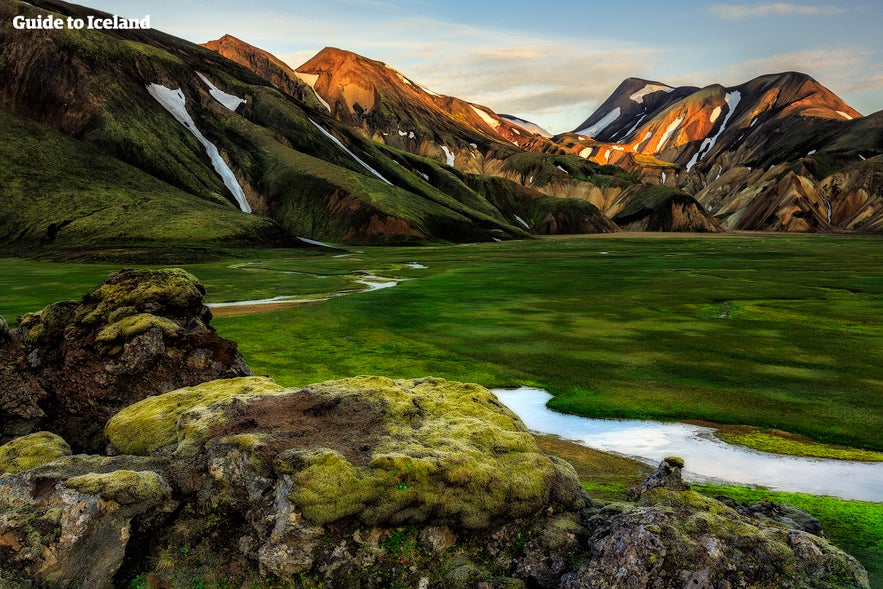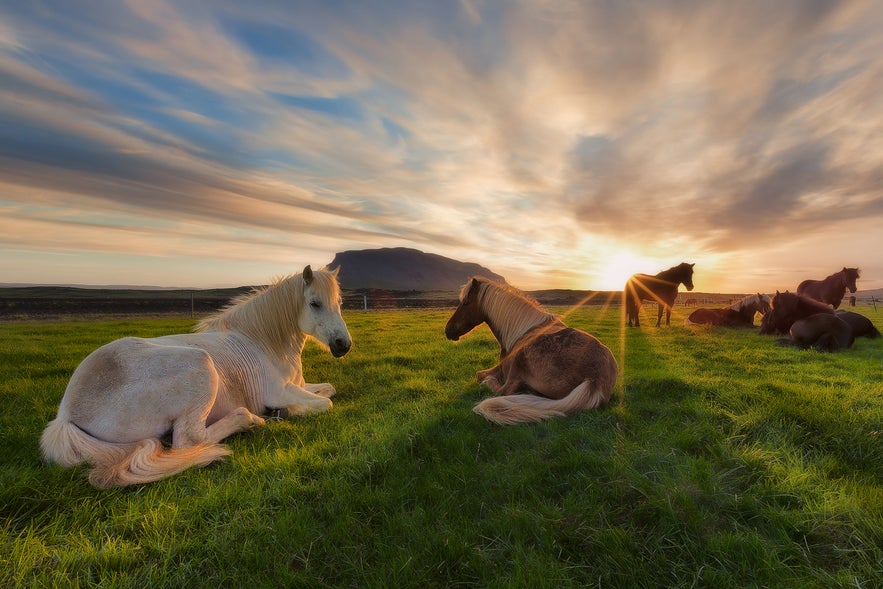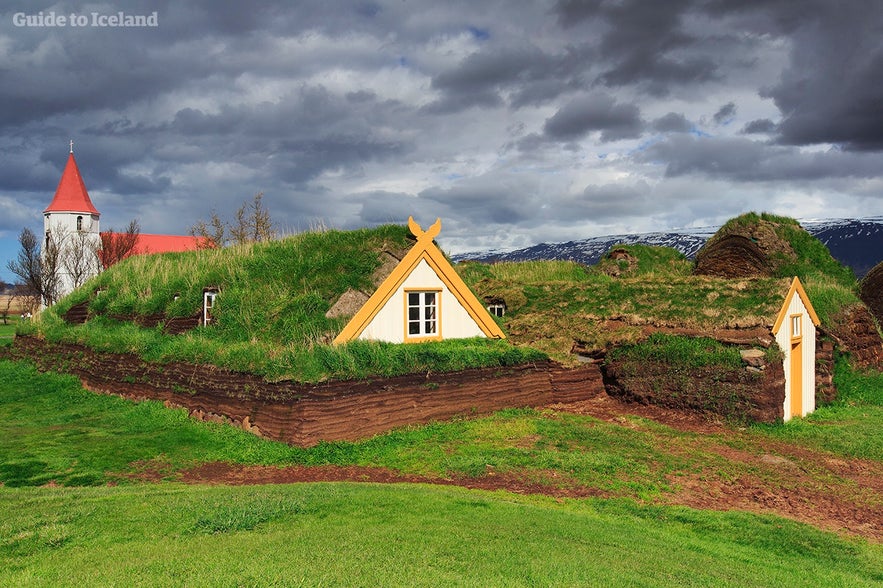
Icelandic Literature for Beginners

What's so unique about Icelandic literature? What are the ancient Icelandic Sagas? What is the Christmas Book Flood or Jólabókaflóðið? Where does Iceland's obsession with crime writing come from? Read more to find out everything you need to know about the literary heritage of this nation of book lovers.
Photo from Wikimedia, Creative Commons, by Finnur Jónsson. No edits made.
- Read more about Icelandic books in The Icelanders and Their Love of Books
- Learn more in the Story of Icelandic Cinema
- Experience the landscapes yourself with this Private Jeep Game of Thrones Adventure
Every year, over 1300 titles are published in a language spoken by only 330 thousand people. To say that Icelanders are book lovers is an understatement. They are utterly obsessed with books.
These books are not just the works of a few, very hard working authors either. It is said that one in every 10 Icelanders has published a book (including me!). Iceland has more books published, more writers and more books read than anywhere else in the world—per capita of course.
Wycieczki kulturoznawcze
24-godzinna karta miejska Reykjavik z bezpłatnym wstępem do muzeów, galerii i basenów geotermalnych
10-dniowa samodzielna wycieczka po całej obwodnicy Islandii z najważniejszymi atrakcjami i Snaefellsnes
Elastyczna 48-godzinna karta miejska Reykjavik z bezpłatnym wstępem do muzeów, galerii i basenów geotermalnych
The Icelandic language has some neat proverbs depicting our love of books such as ‘It is better to be without shoes than without a book’ and ‘A man’s best friend is a book’ (not a dog). ‘To walk around with a book in your stomach’ is a common phrase meaning ‘to have an idea for a book’.
The Icelandic Sagas - Honour, Glory and Revenge
Iceland’s love of the written word has deep roots. Runic inscriptions from times of the Icelandic settlement show that the settlers could read and had thoughts they believed were important enough to (quite literally) set in stone. This feeling that our thoughts are important enough to be printed, to be preserved for generations to come, has not left us.
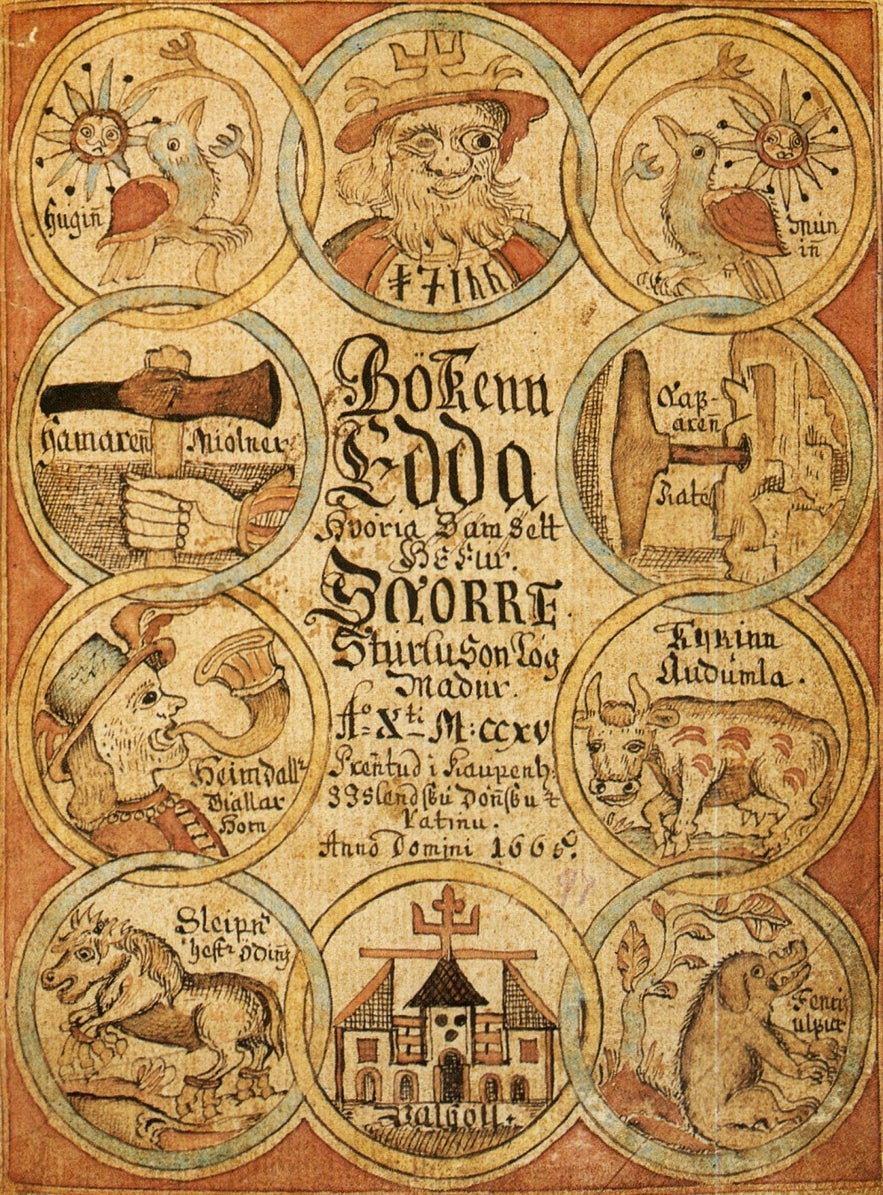
Photo from Wikimedia, Creative Commons, from the Edda. No edits made.
This need of creating something permanent, to preserve information for future generations is perhaps the reason monks in the 13th century started writing down the Icelandic Sagas.
Nobody knows the authors of these Sagas; if there are any. A theory states that these might be true stories (well, true-ish) who were mainly passed down orally from generation to generation.
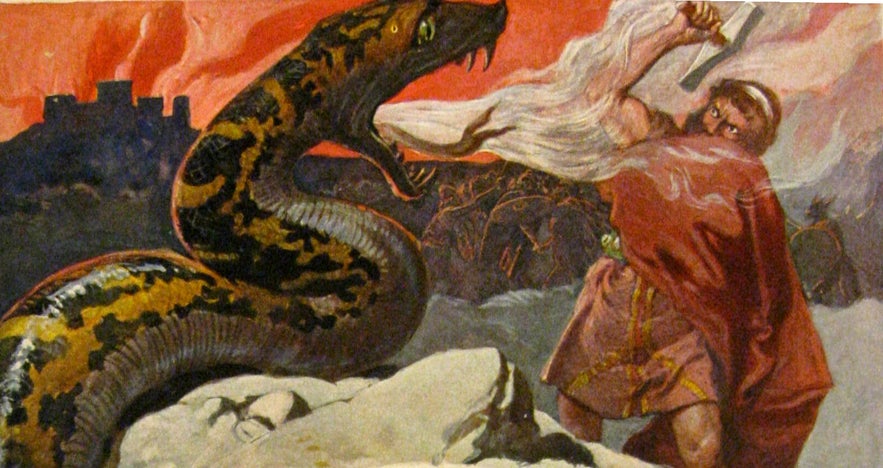 Photo from Wikimedia, Creative Commons, by Haukurth. No edits made.
Photo from Wikimedia, Creative Commons, by Haukurth. No edits made.
The Sagas are perhaps the best known of all Icelandic literature and are still an intricate part of Iceland's culture and identity. The Sagas are a large body of medieval literature depicting the life of Icelandic settlers in the 9th, 10th and early 11th century
Written in a realistic style with a hint of fantasy, the Sagas are filled with epic battles and larger-than-life heroes where the main themes are honour, glory and revenge. These stories have been an inspiration to authors such as Sir Walter Scott, W.H. Auden and J.R.R Tolkien.
One of the most popular Sagas is Njáls Saga (also known as Njála, Brennu-Njálssaga or ‘The Story of Burnt Njall’). It is as popular today as it was 700 years ago when it was first written down. More manuscripts containing this story exist than any other Icelandic Saga, giving us reason to believe that hearing the story once wasn’t enough, people would copy the story on the skin so they could own it themselves.
Njáls Saga’s principal characters are they lawyer and wise man Njáll Þorgeirsson and Gunnar Hámundason, a great warrior. The saga deals with the process of blood feuds and shows how minor insults can escalate into destructive and prolonged bloodshed, all in the name of honour.
- Get Viking experience in this Viking Adventure Tour
Some prominent scholars have argued that the Sagas are not mere pass-time stories, but allegories whose fundamental purpose is to hide and preserve the pagan world-view that came under attack after Iceland's conversion to Christianity in the year 1000 AD.
According to this theory, the Sagas are deeply rooted in an elaborate cosmological system, and each of their characters represents a particular mythological and cosmological concept. Njáll has, for example, been associated with creation, fertility and water and Njáls Saga, so the theory goes, is one enormous puzzle, assembled to safeguard a way of interpreting reality itself.
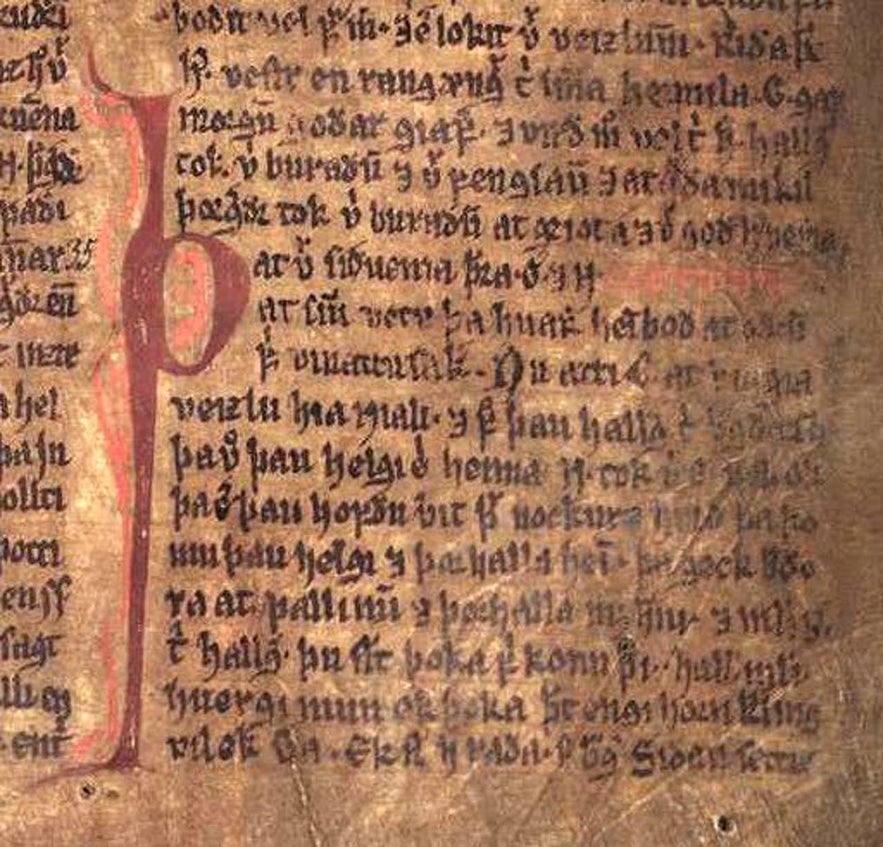 Photo from Wikimedia, Creative Commons, by GDK. No edits made.
Photo from Wikimedia, Creative Commons, by GDK. No edits made.
The Icelandic Sagas will give you the chance to see the world through the eyes of the Vikings. But if you like a little more magic in your Viking stories, you can check out The Edda, two medieval texts known as Poetic Edda and Prose Edda.
The manuscript for Poetic Edda is sometimes attributed to Sæmundur Fróði (or Sæmundur the Learned) a larger than life 12th-century Icelandic priest. It is a collection of Nordic poems and is perhaps the most important source on Norse mythology and Germanic heroic legends.
'Photo from Wikimedia, Creative Commons, by Friedrich Wilhelm Heine. No edits made.
The Prose Edda is believed to be compiled by historian and scholar Snorri Sturluson. It is in four parts; the Prologue (called Prologus) is a short introduction to Norse Mythology. Next up is Gylfaginning (‘Tricking Gylfi’) where the stupid King Gylfi talks to Odin about the creation and destruction of the world.
Then there is Skáldskaparmál (‘The Language of Poetry’) a dialogue between Ægir, the Norse god of the sea, and Bragi, a skaldic god, in which the nature of poetry and the essence of Nordic mythology are entwined. Finally, there is Háttatal (‘list of verse forms’), a 102-verse poem written by Snorri where every verse is written in a different poetic form.
- Learn more about the Sagas
Rebel Writers
The Viking Sagas are still among Icelander’s favourite books and have been since they were first written down. However, a few centuries later, poetry became the dominant form of literature in Iceland. Poets such as Hallgrímur Pétursson (of Hallgrímskirkja fame), Látra-Björg and Grímur Thomsen wrote many beautiful poems portraying Iceland’s stunning landscape.
At the beginning of the 20th century, the books published in Iceland were mostly poetry collections. Not everyone was content on only writing poetry, however, and eventually, a few rebel writers emerged.
One of those writers is Þórbergur Þórðarson who is now one of Iceland’s most beloved authors. But this was not always so. He was one of the first people in Iceland to experiment with auto-fiction in 1924 and wrote several books packed with satire, irony and rowdy self-expression which troubled the public who were used to romantic poetry and the objective style of the Icelandic Sagas.
A contemporary of Þórbergur was the writer Gunnar Gunnarsson. Born in 1889 to poor farmers, he moved early on to Denmark to get an education. There Gunnar wrote most of his works including a novella called The Good Shepherd.
The story, which describes the adventures of a shepherd rounding up sheep from the uninhabited area of Lake Mývatn, captured the attention of Walt Disney who called Gunnar asking him if he could make it into a cartoon. When Gunnar asked how much he would get paid, Disney replied that he was not used to paying authors commission and so, Gunnar hung up on him.
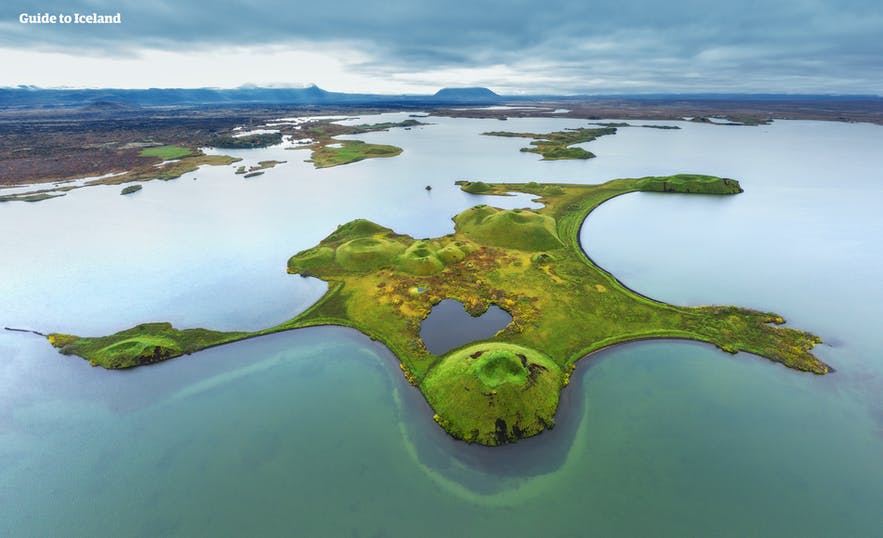
The first Icelandic author to make a living as a writer and the first one to publish a historical fiction novel was Torfhildur Hólm. Born in 1845 she is considered the first Icelandic female novelist.
In 1962 her collection of folktales she had gathered herself over the years called Sögur og Ævintýri (‘Stories and Fairytales’) was published. The stories take a stance on women’s rights and are shown from the perspective of the female characters. Her novel-writings showed both romantic and realistic trades and influenced a young boy, named Halldór Laxness, who would later become a Nobel laureate.
- Read about stories and fairy tales in Folklore in Iceland
- A fairy tale needs a witch, here is an article on Witchcraft in Iceland
The Nobel Prize
Growing up Halldór Laxness, like so many Icelanders, read the Viking Sagas. However, unlike many Icelanders, he wasn’t a fan. In a letter to a friend, Halldór stated that he knew of no text more boring and outdated than the works of Snorri Sturluson and the medieval writers.
A farm boy in the countryside community of Mosfellsdalur, Halldór published his first newspaper article in 1916, then only fourteen years old. Three years later, at seventeen, he published his first novel Barn Náttúrunnar or ‘Nature’s Child’; influenced by people such as Torfhildur Hólm, Sigmund Freud, Ernest Hemingway and his grandmother, Guðný Klængsdóttir. Halldór Laxness became Iceland’s most esteemed author.
- Ride a horse in the area where Halldór Laxness grew up on this tour.
- Read more on Halldór and other famous Icelanders in Top 9 most famous Icelanders in history
Halldór’s works were extensive. He translated writings such as Voltaire’s Candide ou l'Optimisme and Hemingway’s Farewell to Arms into Icelandic, he wrote poems, short stories, essays, theatre pieces and nonfiction.
He is, however, best known for his novels where he perfectly captured the social tensions in Iceland in the 20th century caused by urbanisation, migration, industrialisation and the decreasing role of traditions. This vivid view on social situations got him awarded the Nobel Prize in Literature in 1955.
Perhaps his most revered work (and many Icelander’s favourite book) is Sjálfstætt fólk, or ‘Independent People’, published in two parts in 1934 and 1935. On the surface, it’s a story of a single impoverished Icelandic farmer in the early 20th century, but the farmer, Bjartur of Summerhouses, has the blood of the Vikings flowing through his veins and so the story becomes much more than a story about a poor farmer.
Other famous works by Halldór are Salka Valka, Heimsljós (‘World Light’), Íslandsklukkan (‘Iceland’s Bell’), Kristnihald undir jökli (‘Under the Glacier’) and Atómstöðin (‘The Atom Station’). The last novel, written in 1948 in response to the establishment of a permanent US military base in Keflavík, got him blacklisted in the United States.
What is the Christmas Book Flood or Jólabókaflóðið?
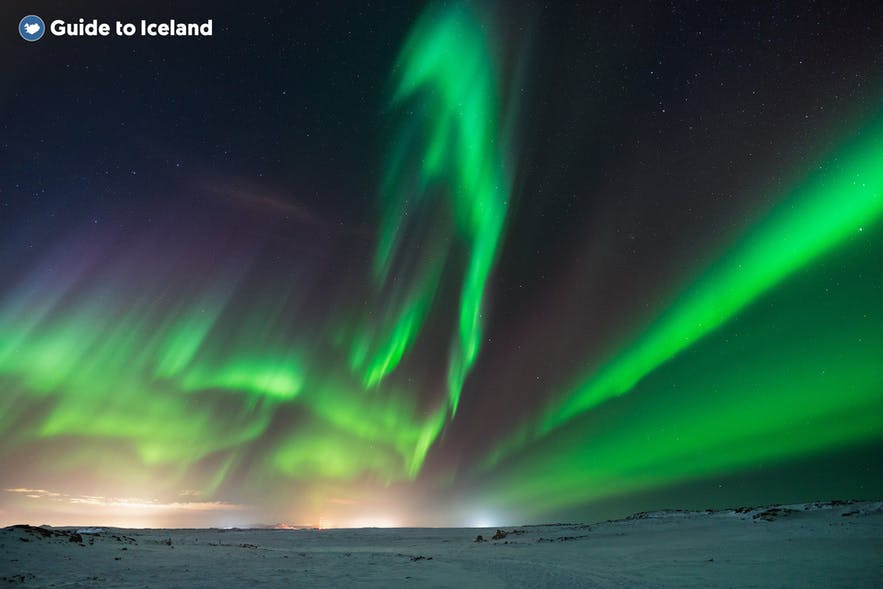
This Icelandic passion for books has created some unusual traditions. Each year in November, every household in Iceland receives a free catalogue, Bókatíðindin or ‘book bulletin’, listing every book to be published in the coming weeks.
This marks the start of 'Jólabókaflóðið' or ‘the Christmas book flood’, a time between November and December when around 500-1000 new titles will be made available, not only in bookstores but also supermarkets and even gas stations.
The most popular item to give as a Christmas present in Iceland is a book. Last Christmas the average Icelander received at least one book as a present. Many Icelanders use the ‘book bulletin’ as a Christmas wishlist, marking every book they would like to receive for Christmas.
 Photo by Ergita Sela
Photo by Ergita Sela
The tradition was created during World War II, when paper was one of the few items not subject to rationing and therefore books became a popular gift.
During the festive season, Icelanders open their book gifts on Christmas Eve (24th December) and traditionally read a choice book they received that evening while drinking either hot chocolate or a Christmas drink called jólabland, which is made by mixing orange soda and dark ale.
- Learn about Christmas in Iceland in Christmas and New Year's Eve in Iceland
Murder!
Realistic but eerie settings, desolate characters and complex subject matters set Nordic noir novels aside from the older whodunit murder mysteries. These novels (also known as Scandinavian noir or Scandi noir) are the new craze in the literary world. As well as literature, there is also film and television as many of the published works have been adapted to the big and small screen. Iceland is, of course, doing its part in keeping the Nordic noir craze alive.
Authors such as Arnaldur Indriðason and Yrsa Sigurðardóttir are well-established writers in this genre and have sold their books all over the world. They are considered Iceland’s crime writing royalty and their characters, such as Arnaldur’s detective Erlendur, are becoming as beloved as Bjartur of Summerhouse and Burnt Njáll.
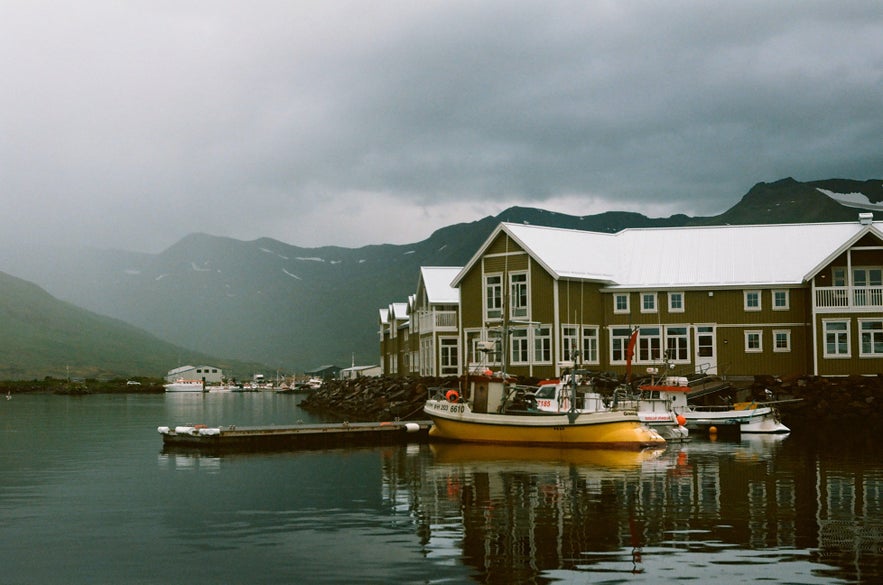 Photo by Alena Timofeena
Photo by Alena Timofeena
The newest royal member is Ragnar Jónasson. As a teenager, Ragnar used to translate Agatha Christie novels into Icelandic which is why his novels, such as Snowblind and Nightblind, have a hint of the classic whodunit murder mysteries but they are set in desolated towns, such as Siglufjörður, which are only accessible via mountain tunnels.
- Stay safe in Iceland by reading this article on Things that can kill you in Iceland
Ugh, no more Murders
Not into murder mysteries? Don’t worry. Iceland has a whole variety of other authors. Like the poet and novelist Steinunn Sigurðardóttir. Her first book Tímaþjófurinn (‘The Thief of Time’), an unusual love story beautifully infused with her poetry, was turned in to a French film in 1999.
The poet, novelist and lyricist Sjón has been active on the Icelandic music scene since the early 1980s. He was even featured as a guest vocalist on a Sugarcubes single Luftgitar (The Sugarcubes were an alternative rock group, formed in 1986 comprised of Björk and other cool people).
Sjón has published many poetry books, novels and novellas. His story, Skugga-Baldur or ‘The Blue Fox’ has been turned into a one-woman play, which is quite a feat considering the story is about a man, Shadow-Baldur, who is hunting a fox in the harsh Icelandic landscape, a botanist and his adopted daughter.
A few novelists have been busy collecting awards and nominations both in Iceland and all over the world. Authors such as Auður Ava Ólafsdóttir, Jón Kalman Stefánsson, Andri Snær Magnason and Gerður Kristný.
If you are in the mood for a laugh, you can check out the hilarious stick figure cartoons of Hugleikur Dagsson. Hugleikur has written several offensive comics such as ‘Should you be laughing at this?’, ‘Avoid us’ and ‘I hate dolphins’.
A friend of Hugleikur and an all-around funny girl Lóa Hlín Hjálmtýsdóttir is a comic book writer whose book ‘Generalizations about Nations’ will show you what people actually think about your country. As well as being the lead singer in the popular band FM Belfast, Lóa Hlín has written (and drawn) several comics in her Lóaboratorium which show little slices of life in a hilarious and inappropriate way.
- Hugleikur's wit earned him a spot in Top 10 sexiest men in Iceland 2015
- You might find Lóa Hlín and FM Belfast at a festival, check out The Top 10 Festivals in Iceland
So if you want to read an Icelandic book, you have a lot to choose from. Everything from ancient Viking Sagas to Nobel Prize winners and offensive cartoons. What are some of your favourite Icelandic books?
Inne interesujące artykuły
Boże Narodzenie na Islandii | Twój kompletny przewodnik po świątecznych tradycjach, jedzeniu i nie tylko!
Dowiedz się wszystkiego o Bożym Narodzeniu na Islandii. Jakie są główne tradycje bożonarodzeniowe na Islandii? Dlaczego Islandia ma 13 Świątecznych Chłopców i czy są oni tym samym co Święty Mikołaj? J...Czytaj więcejLokalizacje filmowe na Islandii — Pełna lista
Jakie międzynarodowe filmy były kręcone na Islandii? Dlaczego hollywoodzcy producenci decydują się na kręcenie filmów na Islandii? Zapoznaj się z naszą pełną listą międzynarodowych wysokobudżetowych...Czytaj więcejSylwester na Islandii
Jak wygląda Sylwester na Islandii? Jak wygląda Sylwester w Reykjaviku? Co sprawia, że Sylwester na Islandii jest wyjątkowy? Gdzie są najlepsze imprezy sylwestrowe w Reykjaviku? Dowiedz się wszystki...Czytaj więcej

Pobierz największą platformę turystyczną na Islandii na telefon i zarządzaj wszystkimi elementami swojej podróży w jednym miejscu
Zeskanuj ten kod QR za pomocą aparatu w telefonie i naciśnij wyświetlony link, aby uzyskać dostęp do największej platformy turystycznej na Islandii. Wprowadź swój numer telefonu lub adres e-mail, aby otrzymać wiadomość SMS lub e-mail z linkiem do pobrania.


